Can Diabetes Cause Pins & Needles in Hands Soon after Running?

If you’re diabetic and you run for exercise, you may have noticed that during or soon after running your hands feel like pins and needles are going through them.
And in fact, people who are not diabetic, as well, from time to time will feel a “pins and needles” sensation in their hands during or soon after their running. (more…)
Cause of Fatigue for Days After Exercise in Diabetics

It may not be just the exercise that leaves a diabetic fatigued for days after.
So when a person with diabetes is still suffering from fatigue even days after exercise, there’s a particular situation going on. (more…)
Swollen Hands & Fingers in a Diabetic After Running: Causes

You can stop worrying if you’ve been experiencing swollen hands and fingers after running even if you have diabetes.
That’s because diabetes does not cause your hands or fingers to swell up as a result of running. (more…)
HIIT for Diabetics: Duration, Frequency, Effect on Sugars

Having diabetes is no reason to shy away from high intensity interval training (HIIT), and in fact, this form of anaerobic exercise can be a superb way to help control blood sugar. (more…)
Update on the Copper Study that Halted ALS in Mice

UPDATE on the breakthrough copper study that halted ALS progression in mice.
The copper-ATSM research is moving along since early 2016. (more…)
Help Prevent Grandma from Falling & Breaking Hip: Tai Chi
Tai Chi once again comes up on top as a way for elderly people to prevent falling and fracturing a hip or sustaining some other serious injury.
One out of every three Americans over age 65 will suffer a fall with injuries in the next 12 months.
The outcome may be a broken wrist, a fractured skull or a shattered hip bone.
Grandma and Grandpa may be unsteady on their feet, but they can still take Tai Chi classes and regain some stability. (more…)
Can Cannabis Stop BFS Muscle Twitching?

Those with benign fasciculation syndrome or bothersome twitching muscles are wanting to know if cannabis can reduce or outright stop these benign twitching episodes. (more…)
Do You Feel too Fat for the Squat Rack? Solutions

Is something holding you back from squatting in the squat rack because you feel too fat?
By the time you’re done reading this article, you will no longer feel too fat to use the squat rack, and instead will feel much deserving of this piece of equipment.
When I was a personal trainer at a big crowded health club, I had the opportunity to teach the back squat to many very large women, including those who seemed a bit intimidated by this exercise.
The fact that you recognize the importance of free-barbell squats means that you are that much closer to achieving your fitness and fat loss goals.
So ask yourself what’s keeping you from getting into the squat rack?
• Fear that others will watch your big body and thunder thighs
• Fear that others will point and snicker
• Fear that others will think, “Why bother? She’s wasting her time.”
• ?????
I’m going to tell you what goes through MY mind when I notice a very plus-size woman doing squats in the “cage” or rack.
The first thing I do is watch her form. This is something I do whenever I see ANYONE squatting.

Shutterstock/UfaBizPhoto
It’s just my automatic response, having been a trainer, and I’ve also written dozens of articles on this very popular exercise.
I watch her form as I would watch a buff man’s form. This has nothing to do with obesity.
The next thing that may catch my attention is how much weight she’s squatting. Or maybe that will come first; depends on the weight.
And then I just can’t help but look at her physique – not because she’s hefty but because she’s squatting.
Squatting tends to change the physique in certain ways (e.g., incredibly firm thighs), and I’m always interested in this.
So that’s my thought processes when I notice an obese woman – or skinny or buff woman – in the squat rack.
Chances are, anyone who’s watching you will be conducting at least one of these three thought processes.
A fourth possibility is a novice who wants to try the back squat and is watching you to collect information. This person certainly observes other squatters for the same reason.
Re-read these four reasons that people will watch someone in the squat rack. Ask yourself if any of these reasons falls under the category of “ridicule” or “making fun of.”
“She Doesn’t Belong in the Squat Rack”
Anyone with decent knowledge of fitness and exercise knows that EVERYONE belongs in the squat rack.
Nobody’s going to think that someone doesn’t belong in the cage simply because they’re a “fatty.”
One reason a person may feel uncomfortable with a barbell across their back is due to their body proportions.
• Are their femur (thigh) bones longer than their torso?
• Are their shin bones disproportionately short relative to their femurs?
Having these proportions makes squatting more difficult than if the ratios were reversed:
• Short thighs and long torso
• Long shins and short thighs
If you’re fat, this has NO bearing on your bone and torso lengths.
In fact, if your thigh bones are several inches shorter than your torso, you will very likely find squatting for the first time a lot easier than will a thin woman who has long thigh bones and a short trunk.
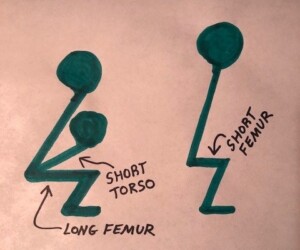
You will be able to more comfortably “sit back” in the squat and keep your spine fairly upright, while your skinny friend will have to lean far forward to prevent falling backwards – placing undue stress on her lower back.
If you have good squat proportions, you may actually be the envy of a thin observer.
I was once watching a husky woman in the squat rack – she was new to the exercise, as evidenced by the very light weight of the barbell.
But damn, she had marvelous proportions! I watched in envy because I don’t have the best “anthropometrics” for the back squat – even though I’m lean.
“A Waste of Time”
There’s no such thing as wasting time doing one of the most scientifically-backed exercises around.
If anything’s a waste of time, it’s crunches and the inner/outer thigh machines. The back squat has been heavily researched and proven to be a killer fat-burner, not to mention other benefits:
• Strengthens the core
• Strengthens hip and knee joints
• Strengthens the upper back, glute and leg muscles
• Improves neuromuscular coordination
• Firms the booty
• Has dramatic carryover to the tasks of daily living
NOBODY is going to snicker or watch you with disdain JUST BECAUSE you are plus size.
I’ve watched hefty women squatting who clearly were not novices, and they all had a firmness and tightness about their thighs that non-trained women the same size do NOT have.
They also tend not to have a big bulge encircling their waist. They’re overweight there, of course, but the fat and muscle has been re-compositioned such that there’s a smoother, firmer appearance – rather than blubbery or jiggly — despite being a large waist size.
If you’re a fat woman who’s been itching to get into the squat rack but have felt intimidated, you have NOTHING to lose (but fat and flab) and everything to gain! Just march right in there and DO IT.
 Lorra Garrick is a former personal trainer certified through the American Council on Exercise. At Bally Total Fitness she trained women and men of all ages for fat loss, muscle building, fitness and improved health.
Lorra Garrick is a former personal trainer certified through the American Council on Exercise. At Bally Total Fitness she trained women and men of all ages for fat loss, muscle building, fitness and improved health.
.
Top image: Shutterstock/LightField Studios
Why Do Women Tighten Their Ponytails Before a Heavy Lift?
Ever notice that as a fit woman prepares for a heavy lift at the gym, she first tightens her ponytail?
There seems to be a correlation between how strong a woman is and how likely she is to tighten, adjust or in some way “fix” her ponytail.
I was inspired to write this post after seeing the words of wisdom below on Pinterest.

My first thought after reading this was, “That’s so true!”
It must be a well-known phenomenon, because I found this other quote-image too:

Yes, I have seen women tightening their ponytails right before they did a set of squats – especially when they’re working out in pairs.
I’ve seen them do it two, sometimes three times, over the course of a squat routine.
Sometimes they take out the ponytail and then re-band it – and of course, the job’s not done till they give it a final pull on either side to tighten it.
THEN IT’S GAME ON: Lift that Barbell!
I’m pretty sure I’ve seen women tighten ponytails prior to deadlifts and bench presses, though I don’t have as independent a recall for these particular weightlifting moves as I do for the squat.
I kept putting off writing this post until the day I noticed a woman, who was wearing a long ponytail, doing cleans.
When she got up to 85 pounds, I thought, “Hmm, that’s pretty good for a woman.” Most average men off the street can’t clean an 85 pound barbell.
I wondered when she was going to tighten her ponytail.
Then she loaded the barbell to 95 pounds. And by the way, it was easy for me to discreetly observe her between my sets because I was at the nearby squat rack, and she was out in the open.
So I knew that she hadn’t tightened her ponytail yet, but I just had a gut feeling it was coming.
And by golly, she did it! She tightened her ponytail and then cleaned the 95 pounds!
Now granted, most women actually do not tighten their ponytails before they do a strength training set.
However, every woman I’ve even seen tighten her ponytail right before lifting a weight 1) Lifted much heavier weight, for that particular exercise, than what most women at a typical gym can, and 2) Had a body that looked trained.
Why Women Tighten Their Ponytail Right Before a Big Lift
I wear a ponytail but never tighten it before my lifts. It’s set securely before I step onto the gym floor and doesn’t loosen.
In the case of the woman cleaning, I had noticed, prior to her tightening it, that the ponytail was getting loose from her repeated bending over to clean the barbell.
She would actually deadlift it twice, then clean it, deadlift twice, then clean, etc., for a single set. This action loosened the rubber band’s hold.
But the back squat doesn’t require repeatedly bending over. Thus, a loosened, floppy hold is not an issue.
I gather that a woman tightens a ponytail before a heavy lift for the same reason that a man might grunt before a heavy squat or even briefly clench both fists and then place his hands at his side, fingers fanned out, arms flared out and bent, before stepping under the bar.
Ever watch a pitcher in a major league baseball game? Watch what he does with his hands for several seconds before he throws the ball.
There’s all sorts of ritualistic patting of his torso, repeated adjusting of his cap, etc., that don’t actually have anything to do with winding up for the pitch and executing the motion.
Athletes tend to perform ritualistic behaviors right before the big move. When I used to play volleyball, I had to bounce the ball a certain way — the same way every single time — right before I powered out my signature serve.
The bouncing always was five times, with a one-two, pause, one-two, pause, one tempo – and then boom!
Many pro tennis players will do this too, bouncing the ball a certain way, certain cadence and same number of times every time before they serve.
And need I point out the classic movements of a pro golfer’s feet right before they make a putt?
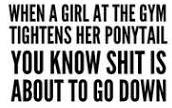
Tightening the ponytail right before that lift – especially if it’s the heaviest weight for her yet — is a ritualistic way to grace herself with good luck.
It yields a sense of control and security before moving a heavy weight.
Her ponytail is one of the few things she has 100 percent control over right before she steps under a 135 pound barbell to knock out eight ATG reps. It just HAS to be tightened first!
 Lorra Garrick is a former personal trainer certified through the American Council on Exercise. At Bally Total Fitness she trained women and men of all ages for fat loss, muscle and strength building, cardio fitness and improved health.
Lorra Garrick is a former personal trainer certified through the American Council on Exercise. At Bally Total Fitness she trained women and men of all ages for fat loss, muscle and strength building, cardio fitness and improved health.
Why Do People Think Nutella Is So Healthy?
Think of Nutella as spreadable candy, and you won’t think it’s so healthy.
Since when is sugar in spreadable form good for you? Because it contains hazelnuts and cocoa?
The first ingredient in Nutella is sugar!
My sister-in-law was talking to me one day about giving her kids healthy foods, and sure enough, Nutella came up.
She must have gotten the idea that Nutella is nutritious after seeing ads for it that paint it as a health food.
Nutella is 55% sugar.
The next ingredient by weight is vegetable oil. Not olive oil or coconut oil (healthy oils), but vegetable oil (palm).
More recently the ingredient has been more specifically identified as modified palm oil – a very processed oil.
It’s a cheap way to make Nutella spreadable on bread and prolong its shelf life.
Nutella does not have artificial dyes, preservatives or high fructose corn syrup. But this doesn’t make it good for the body. Being low in sodium doesn’t make Nutella good either.
All it takes is a whopping amount of sugar to disqualify a food from being healthy for the body.

Reasons Nutella Is Thought of As a “Healthy” Food
“This is a concept that I find so interesting because Nutella is sometimes touted as a health food,” says Shana Spence, MS, RDN, CDN, a registered dietitian nutritionist based in New York.
“Some people think that because it’s a hazelnut ‘spread’ it’s like other nut butters and should be healthy.
“Normally yes, this should be the case because nut butters [without added sugar] are a healthy option.
“However, Nutella is made from a ton of added sugar. The first ingredient listed is sugar! That alone should be the giveaway that this is definitely not the best choice.
“This spread has 21 grams of sugar per serving which is equal to about five teaspoons of sugar!”
Nutella’s nutrition label names only two tablespoons as a single serving. If you really love this stuff on, say, a bagel, you’re going to smear on a LOT more than two tablespoons.
Spence continues, “Nutella comes from Italy which is known for having some of the healthiest foods and lifestyles.
“The Mediterranean diet is now having a moment, so oftentimes people associate ALL foods that come from that region as being healthy.
“The words no artificial flavors and preservatives are used. To some people this is associated as being overall healthy, and they often think of something being ‘natural.’”
The absence of fake flavors and preservatives does not negate the sugar and “bad” oil content in Nutella.
Other Theories
• Is it the funky name, “Nutella”?
• Or the TV commercials maybe?
• It’s gotta be that rad name.
Look, if you love Nutella, keep eating it, but from now on, you should realize it for what it is: spreadable candy.
Treat it like candy: Eat it occasionally. If you haven’t introduced it to your children, don’t.
They’ll eventually get old enough to learn about it. There’s no rush for them to consume yet one more form of sugary candy.
If your kids have already been eating this stuff, then serve it to them with the discretion you use when giving them a donut or ice cream cone.


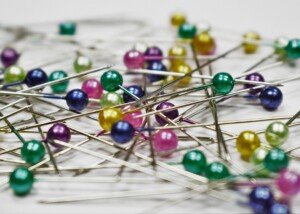
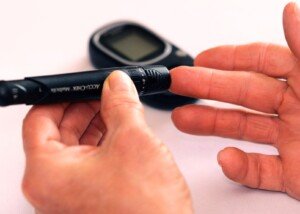


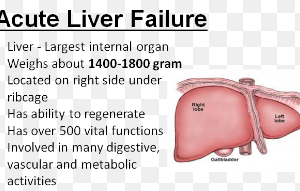



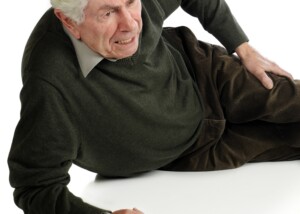

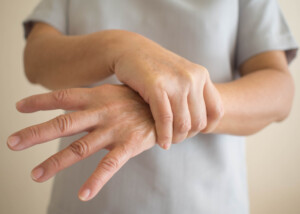


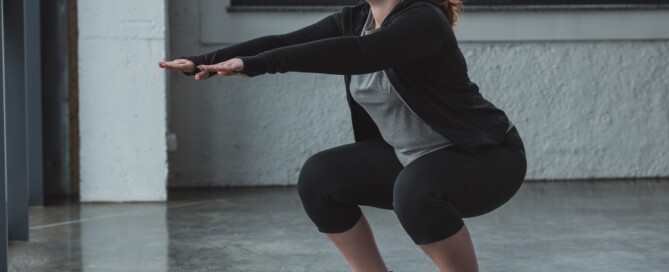



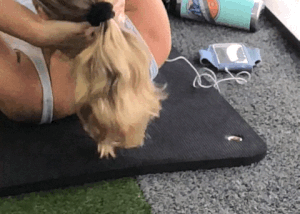

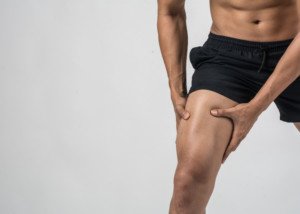

 Shana Spence
Shana Spence







































